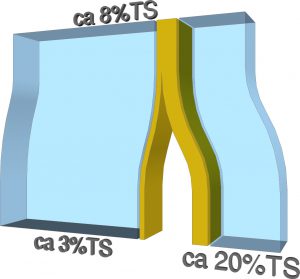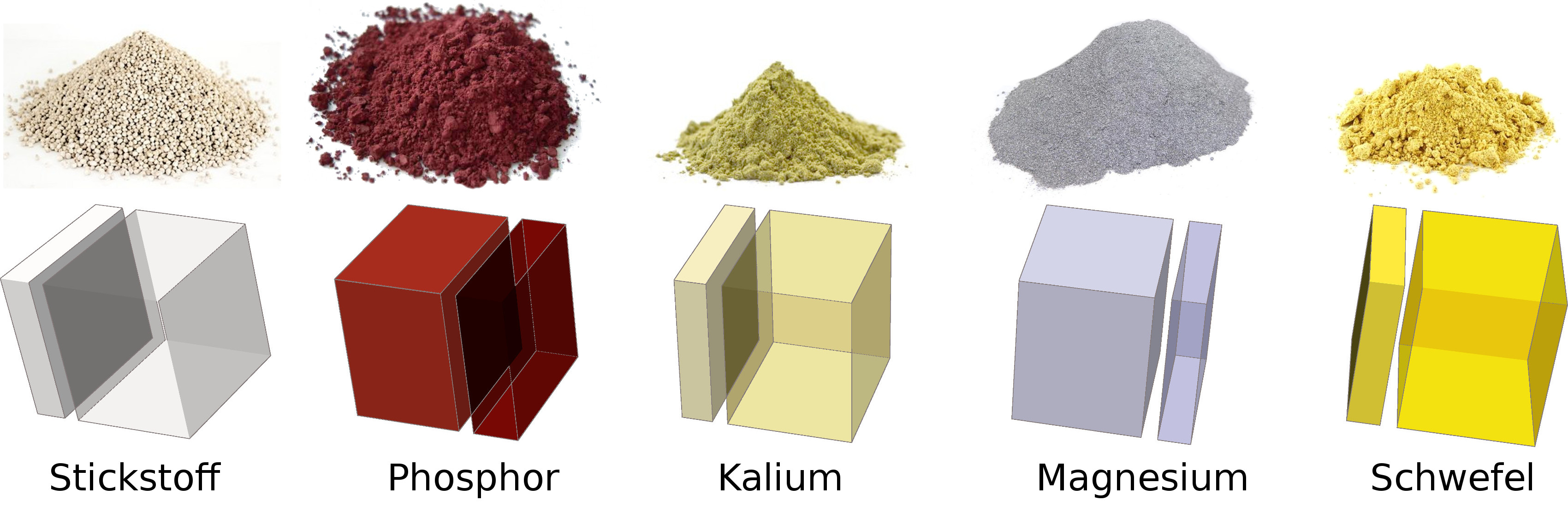Info Gülleseparation und Nährstoffe
Nährstoffe aus Gülle und Biogassubstrat abseparieren?
Eine vollständige Nährstoff-Rückgewinnung aus Gülle und Biogassubstrat lässt sich mittels komplexer Anlagen in einer Kombination aus chemischen und mechanischen Behandlungsweisen realisieren: Beispielsweise im sogenannten P-RoC Verfahren zur Phosphor-Rückgewinnung, bei dem eine Kristallisation von phosphorhaltigen Mineralphasen in der Gülle an Calcium-Slikat-Hydrat in einem Reaktor erfolgt. Es existieren darüber hinaus eine Vielzahl weiterer Verfahren und Prozesse in unterschiedlicher Komplexität.
Der Betrieb geeigneter prozesstechnischer Anlagen zur Nährstoffrückgewinnung ist aufwendig und erfordert in der Bedienung verfahrenstechnische Fachkräfte. Auch erfordern die verfügbaren Prozesse und Verfahren die Zugabe von chemischen Produkten wie Flockungs- und Koagulationsmitteln und anderen Substanzen zur Regulierung des pH-Werts, wodurch sich die Kosten erhöhen.
In vielen Fällen ist eine hundertprozentige Nährstoffrückgewinnung glücklicherweise nicht erforderlich; eine rein mechanische Trennung der Gülle/des Biogassubstrats mittels eines Gülleseparators bewirkt in der Regel eine effektive und kostengünstige Aufteilung der im Ausgangsmaterial enthaltenen Nährstoffe auf die Endprodukte in Fest- und Flüssigphase. Für alltagstaugliche Anwendungen gilt es, diesen Effekt bestmöglich und mit kalkulierbarem Aufwand zu nutzen.
Das Siebtrommelverfahren
Bei der mechanischen Nährstoffabtrennung müssen die in der Gülle / im Biogassubstrat enthaltenen Faserstoffe so schonend wie möglich "herausgeholt" werden. Es hat sich gezeigt, daß die in der Flüssigkeit schwimmenden Fasern auf natürliche Weise die Nährstoffe anziehen und akkumilieren. Das Prinzip des Schneckenseparators eignet sich nicht zum Ausnutzen dieses Effekts (beim Einsatz eines Schneckenseparators entsteht ein hoher Druck und es kommt zur Reibung der Fasern aneinander, an der Schnecke und am Siebkörper, wodurch die Nährstoffe von den Fasern gelöst werden).
Dagegen behandelt das Siebtrommelverfahren die Feststoffe schonend; somit bleiben die Nährstoffe an und in den Faserstoffen haften. Die Gülle bzw. das Biogassubstrat wird zwischen einem aufeinander abrollendem Siebkörper und einer gummierten Presswalze praktisch ohne Einwirkung von Reibung hindurchgezogen. Die Struktur und Beschaffenheit der faserigen Feststoffe wird nicht verändert. Die enthaltene Flüssigkeit wird abgequetscht und im Inneren der sich drehenden Siebtrommel zur abseparierten Flüssigphase gesammelt. Die Feststoffe verbleiben auf der Aussenseite des Siebkörpers und werden über eine Abstreifkante abgefördert.
Separate nutrients from manure and biogas substrate?
An extensive nutrient recovery from manure and biogas substrate can be realized by means of complex plants in a combination of chemical and mechanical treatments, for example the so-called P-RoC process for phosphorus recovery: The P-RoC process is based on a crystallization of phosphorus mineral phases to calcium-silicate-hydrate inside a special chemical reactor. many other systems and processes of varying complexity exist to reach similar goals.
The operation of suitable technical processes and systems for nutrient recovery is complicated and requires skilled labour and specialists to operate the plant. Also, the available systems and processes require the addition of chemical products such as flocculants, coagulants and other pH regulating agents, thereby increasing costs.
Fortunately, in many cases, a full nutrient recovery off 100% is not required; a purely mechanical separation of the manure / biogas substrate using standard and proven liquid manure separators usually causes an effective and cost-effective distribution of the nutrients contained in the input material to the final products in solid and liquid phase. An application suitable for everyday use has to make use of this effect in the best possible way and with a calculable effort.
The sieve drum process
In the case of mechanical nutrient separation, the fibrous materials contained in the manure / biogas substrate must be "extracted" as gently as possible. It has been found that the fibers floating in the liquid naturally attract and accumulate the nutrients. The principle of the screw separator is not suitable for taking advantage of this effect (when using a screw separator creates a high pressure and it comes to friction of the fibers together, on the screw and on the screen body, whereby the nutrients are released from the fibers).
By contrast, the sieve drum process gently treats the solids; Thus, the nutrients remain on and adhere to the fibers. The manure or the biogas substrate is pulled between a successive rolling Siebkörper and a rubberized press roll virtually without the action of friction. The structure and nature of the fibrous solids we do not change. The contained liquid is squeezed off and collected inside the rotating screen drum to the separated liquid phase. The solids remain on the outside of the screen body and are conveyed away via a scraper edge.

Die mechanische Fest-Flüssig-Trennung
Bei einer mechanischen Fest-Flüssig-Trennung bleibt die Gesamtmenge (Gesamtmasse) an Flüssigkeit und Feststoff erhalten. Die im Eingangsmaterial ![]() enthaltene Flüssigkeit und der enthaltene Feststoff wird auf die Ausgabemengen der abseparierten Feststoffe
enthaltene Flüssigkeit und der enthaltene Feststoff wird auf die Ausgabemengen der abseparierten Feststoffe ![]() und der Flüssigphase
und der Flüssigphase ![]() aufgeteilt. Für den Anwender ist dabei die Massenbilanz ein wichtiges Kriterium. Sind alle drei Trockensubstanz-Anteile für Eingangsmaterial
aufgeteilt. Für den Anwender ist dabei die Massenbilanz ein wichtiges Kriterium. Sind alle drei Trockensubstanz-Anteile für Eingangsmaterial ![]() , Separat
, Separat ![]() und Flüssigphase
und Flüssigphase ![]() bekannt lässt sich beispielsweise ermitteln, welche Mengen an Separat und Flüssigphase herauskommen:
bekannt lässt sich beispielsweise ermitteln, welche Mengen an Separat und Flüssigphase herauskommen:
The mechanical solid-liquid separation
In a mechanical solid-liquid separation, the total amount (total mass) of liquid and solid is retained. The liquid contained in the input material ![]() and the solid contained is divided into the output quantities of the separated solids
and the solid contained is divided into the output quantities of the separated solids ![]() and the liquid phase . For the user, the mass balance is an important criterion. If all three dry matter fractions for input material
and the liquid phase . For the user, the mass balance is an important criterion. If all three dry matter fractions for input material ![]() , separate
, separate ![]() and liquid phase
and liquid phase ![]() are known, it can be determined, for example, what amounts of separate and liquid phase come out:
are known, it can be determined, for example, what amounts of separate and liquid phase come out:


Beispiel
Mit 8% Trockensubstanz im Eingangsmaterial, 3% TS in der abseparierten Flüssigkeit und 20% TS in den abseparierten Feststoffen teilen sich
- 1000kg Eingangsmaterial auf
- 295kg abseparierte Feststoffe und
- 705kg abseparierte Flüssigphase auf.
Es ist zu beachten, daß die Summe der Nährstoffe aus abseparierter Flüssigphase und abseparierten Feststoffen der Menge im Eingangsmaterial entspricht. Durch die mechanische Fest-Flüssig-Trennung mit dem Siebtrommelseparator wird dabei eine charakteristische Aufteilung der Nährstoffe erreicht.
example
With 8% dry matter content in the input material, 3% dm in the separated liquids and 20% dm in the separated solids
- 1000kg input material are separated into
- 295kg of separated solids
- 705kg of separated liquids
It should be noted that the total quantity of the nutrients in the fraction of separated liquids and separated solids corresponds to the same amount in the input material. The mechanical solid-liquid separation using the drum screen separator results in a very characteristic distribution of nutrients.

charakteristische Aufteilung der Nährstoffe






